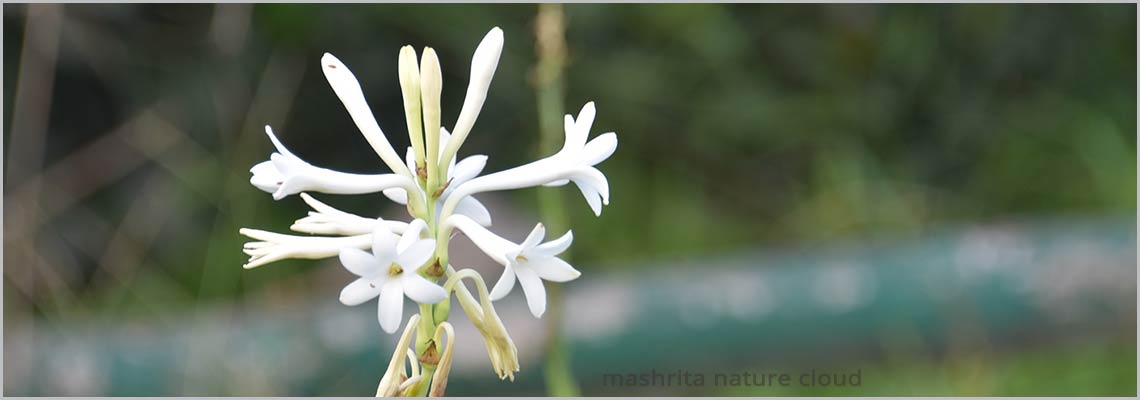Growing Rajnigandha Polianthes Tuberosa Bulbs is an easy task, any unprofessional grower can grow the bulbs in a 6″ pot, it is an easy care flower which does not require special expertise to grow it as house flower plant, just right season bulbs are required as it has summer as well as winter bulbs available in the market.
Polianthes Tuberosa (Rajnigandha), the tuberose is a perennial flowering plant (A perennial plant is a plant that lives for more than two years), native to Mexico and categorized under Asparagaceae plants family. Meaning of Rajanigandha is “The Fragrance of the Night”, it has tubular blooms with magical and seductive fragrance which is uncommon and spells magic to all who smell it. Tuberose is a popular flower in floral arrangements and scent is used to produce perfumes world wide.
Rajnigandha is known with several common names like, in Bengali it is known as Rajoni-Gandha, in Urdu Gul Shabbi, in Marathi, NishiGandha, in Kannada Sugandharaja, in Tamil Sambangi and in Telugu NelaSampenga and the flowers are traditionally used to make garlands in Indian weddings.
Rajnigandha grows in elongated spikes up to 45 cm (18 in) long that produce clusters of fragrant waxy white flowers that bloom from the bottom towards the top of the spike. It has long, bright green leaves clustered at the base of the plant and smaller, clasping leaves along the stem. The unopened buds are pinkish but the flowers are pure white, tuberose thrives in sunny spots and bloom in late summer (summer bulbs).
Rajnigandha has three major varieties common, single flower, double flower and semi double flower available for summer season and winter season separately. Tuberosa bulbs from West Bengal (Kolkata) are most popular for their exotic fragrance.
Growing Rajnigandha Polianthes Tuberosa Bulbs:
Prepare soil or coco-peat with good drainage and nutrient rich, as tuberose needs heavily enriched potting mix and it can not grow if waterlogged. To enrich the soil or coco-peat add organic material such as vermi compost, cow dung manure, other compost or decomposed manure.
Find a place that gets full sun for 5-8 hours during the day time and don’t forget to choose a position where you and other family members will get the most from the delightful fragrance once the flowers bloom. Dig a hole a few inches or centimeters deep for inserting the bulb if you have a cluster of bulbs, plant the entire clump, leaving 2-3 inches (5-7.5cm) of soil above the clump. Situate bulbs about 6-8 inches (15-20cm) apart to allow proper growth.
Water generously and regular as the tuberose is establishing itself in initial week. Tuberose requires frequent deep watering from the appearance of the first growth throughout the growing season. The roots and shoot will form within a couple of weeks after planting. If it rains regularly, that will provide sufficient watering for the day. Take care not to over water, as tuberose rots easily that’s the reason it needs well-draining soil.
Tuberose flourish with generous feeding during the active growth phase, add complete plant food once growth first appears and repeat fertilizing every 4-6 weeks.
The flowers will appear about 90-120 days after planting, usually late summer or early autumn, removal of the flowers for house display will not harm the plant. Enjoy bringing the scent into your home! Cut flowers for vases when two or three of the lower blooms are opened fully, remove spent flowers from the spike to prolong the life of remaining cut blooms.
After flowering, don’t remove the foliage as it continues to feed the bulb for next year’s growth. Cease watering as the plant turns yellow in autumn (fall). At this point, the flowering cycle is complete and the tuber is preparing to become dormant for winter. The leaves can be removed only once they’ve yellowed completely and it’s late in the season, if you’re going to dig up the tubers for next season, remove bulbs and let them dry few days in shade.





Leave a comment
You must be logged in to post a comment.